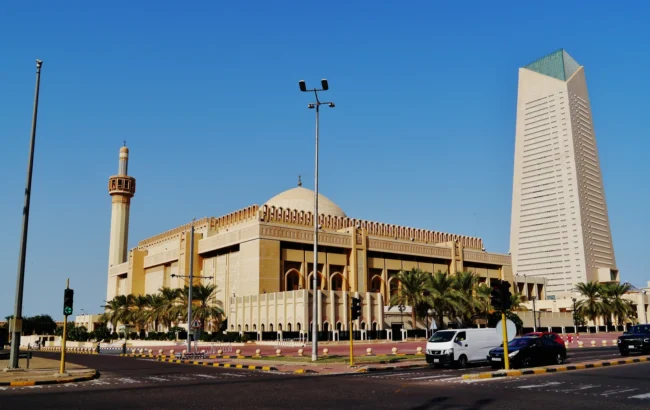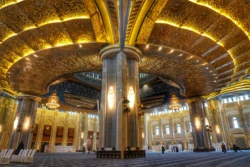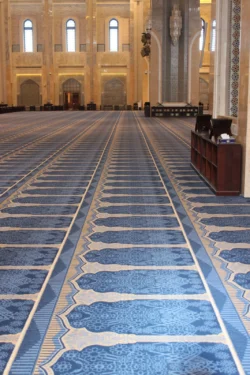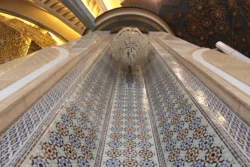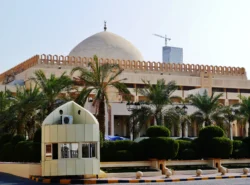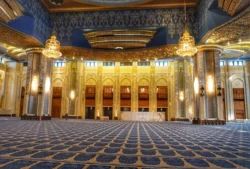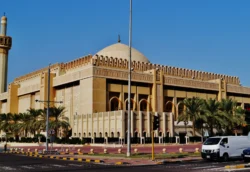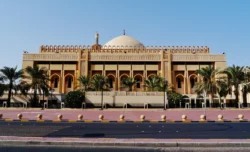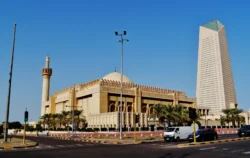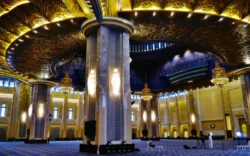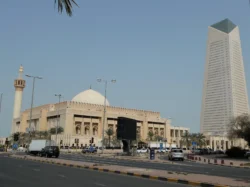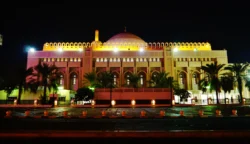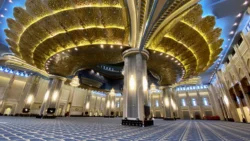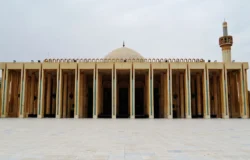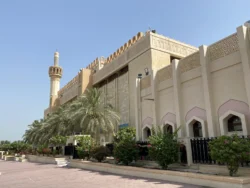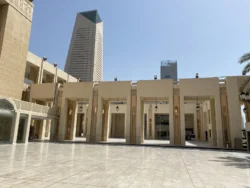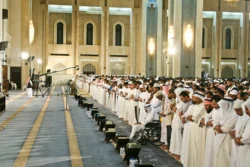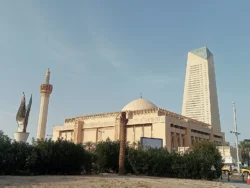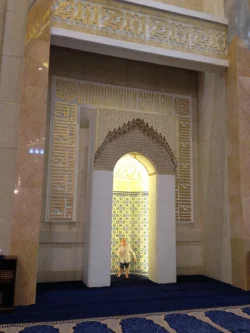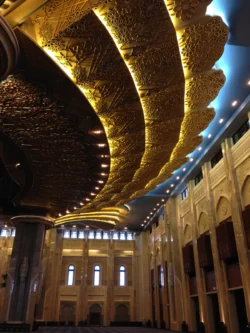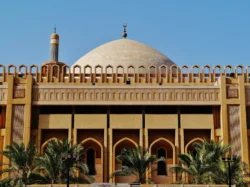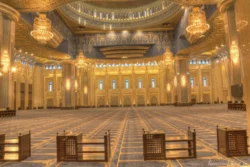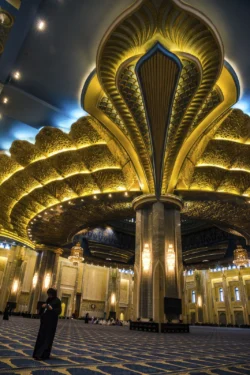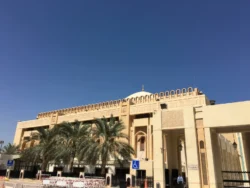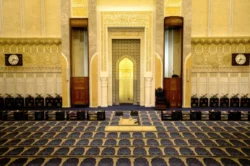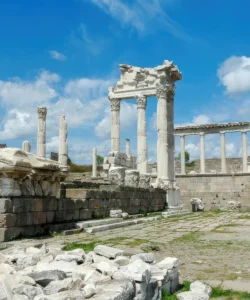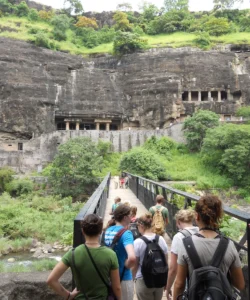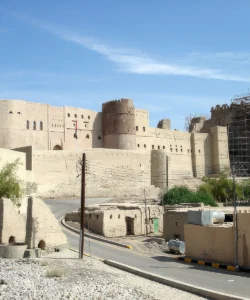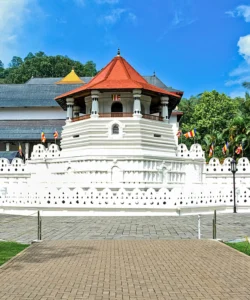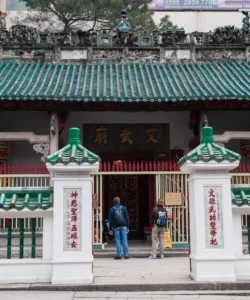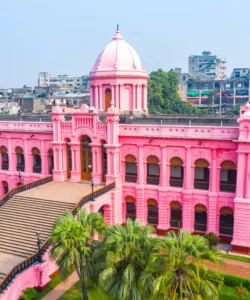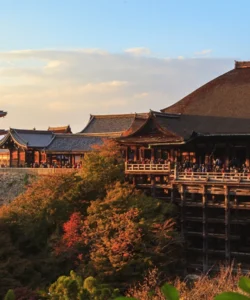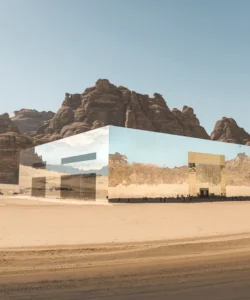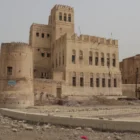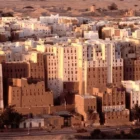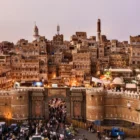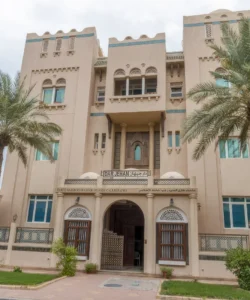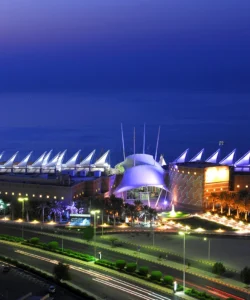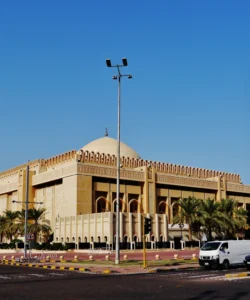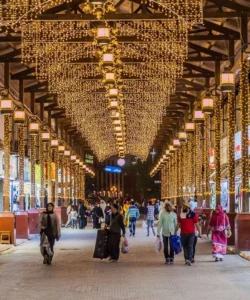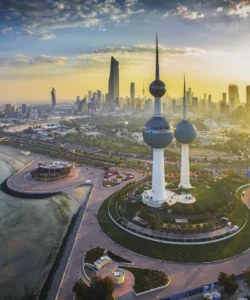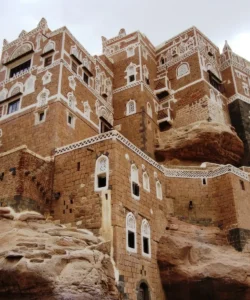The Grand Mosque of Kuwait (Al-Masjid Al-Kabir) is the largest and official mosque in Kuwait City. Completed in 1986, it stands as a majestic testament to Islamic faith and a pinnacle of Islamic art and architecture, blending traditional design with modern craftsmanship. It serves as a central hub for religious celebrations and a significant cultural landmark in the country.
Listen to an introduction about Grand Mosque of Kuwait
Name and Address
- Name: Grand Mosque of Kuwait (Arabic: المسجد الكبير, Al-Masjid Al-Kabir)
- Address: Arabian Gulf Street, across from Al-Sief Palace, Kuwait City, Kuwait.
How to Get There
The Grand Mosque is centrally located in Kuwait City and is easily accessible for visitors.
- By Car/Taxi: Taxis are readily available. Simply tell the driver “Grand Mosque of Kuwait.” There’s also available parking.
- By Public Bus: Several public bus routes have stops near the mosque.
- On Foot: If you’re staying in a nearby central area, the mosque is often within walking distance.
- On-Site: The mosque is generally open to visitors outside of prayer times. Guided tours are often available and highly recommended to gain deeper insights into its history and architecture. Visitors are required to dress modestly (long sleeves, long trousers/skirts for men and women, and women must cover their hair). Shoes must be removed before entering the prayer halls.
Landscape and Architecture
The Grand Mosque of Kuwait is a sprawling complex that impresses with its grand scale and intricate details, showcasing a harmonious blend of traditional Islamic and modern architectural styles, with notable influences from Persian and Andalusian design.
- Overall Complex: The mosque covers a vast area of 45,000 square meters (480,000 sq ft), with the building itself occupying 20,000 square meters (220,000 sq ft). The remaining area consists of beautifully landscaped gardens and courtyards. It can accommodate up to 10,000 men in the main prayer hall and 950 women in a separate hall, with additional capacity in the courtyards for a total of 70,000 worshippers during major events.
- Main Prayer Hall: This vast hall measures 72 meters (236 ft) on each side. It is covered by a magnificent central dome, 26 meters (85 ft) in diameter and 43 meters (141 ft) high, adorned with the 99 names of God (Asma al-Husna) in Kufic calligraphy. Natural light floods the hall through 144 windows.
- Minaret: The mosque features a single minaret, 74 meters (243 ft) tall, located at the northwest corner, which resembles Andalusian architecture.
- Materials and Decoration: The exterior is clad in natural stone of various shades, while the interior boasts exquisite marble, Moroccan gypsum, and intricate geometric patterns. Gold leaf and vibrant blue hues are prominent throughout. The 21 main doors are made of hand-carved Indian teakwood.
- Amiri Hall: A specially designed hall for the Amir (ruler) to receive well-wishers on religious occasions, featuring Moroccan character and intricate plasterwork.
- Facilities: The mosque includes a 350-square-meter library of Islamic reference books and documents, and a 5-level underground car park that can hold up to 550 cars, which can also be used as an additional prayer area during peak times like Ramadan.
What Makes It Famous
- Largest Mosque in Kuwait: Its sheer size and capacity make it the largest and most significant mosque in the nation.
- Architectural Masterpiece: It is internationally renowned for its stunning Islamic architecture, blending traditional elements with modern engineering and exquisite artistry.
- Symbol of National Identity: The Grand Mosque has become a treasured landmark and a powerful symbol of Kuwait’s Islamic heritage and national pride.
- Religious Hub: It serves as the official mosque for major religious celebrations and is a vital center for Islamic learning and spirituality.
- Artistic Grandeur: The mosque’s interior is a canvas of intricate Islamic art, featuring elaborate Arabic calligraphy, geometric patterns, and vibrant mosaic work.
Differences from Some Other Attractions
- Primary Religious Function: Unlike attractions that are primarily commercial (like Al Mubarakiya Souq) or secular landmarks (like the Kuwait Towers), the Grand Mosque’s fundamental purpose is religious worship and education, though it welcomes visitors of all faiths.
- Traditional Islamic Architecture: While the Kuwait Towers represent modern architecture, the Grand Mosque showcases a more traditional Islamic architectural style, drawing inspiration from historical Arab and Persian designs, providing a strong contrast in the city’s skyline.
- Focus on Spiritual and Cultural Learning: Beyond its visual grandeur, the mosque emphasizes its role as a center for Islamic knowledge and cultural exchange, with a large library and guided tours designed to educate visitors about Islamic practices and heritage.
- Scale of Worship Space: Its immense prayer halls and courtyards are designed to accommodate tens of thousands of worshippers, highlighting its function as a major congregational site, a scale of direct religious use that differentiates it from other attractions.
Grand Mosque of Kuwait Photos:
